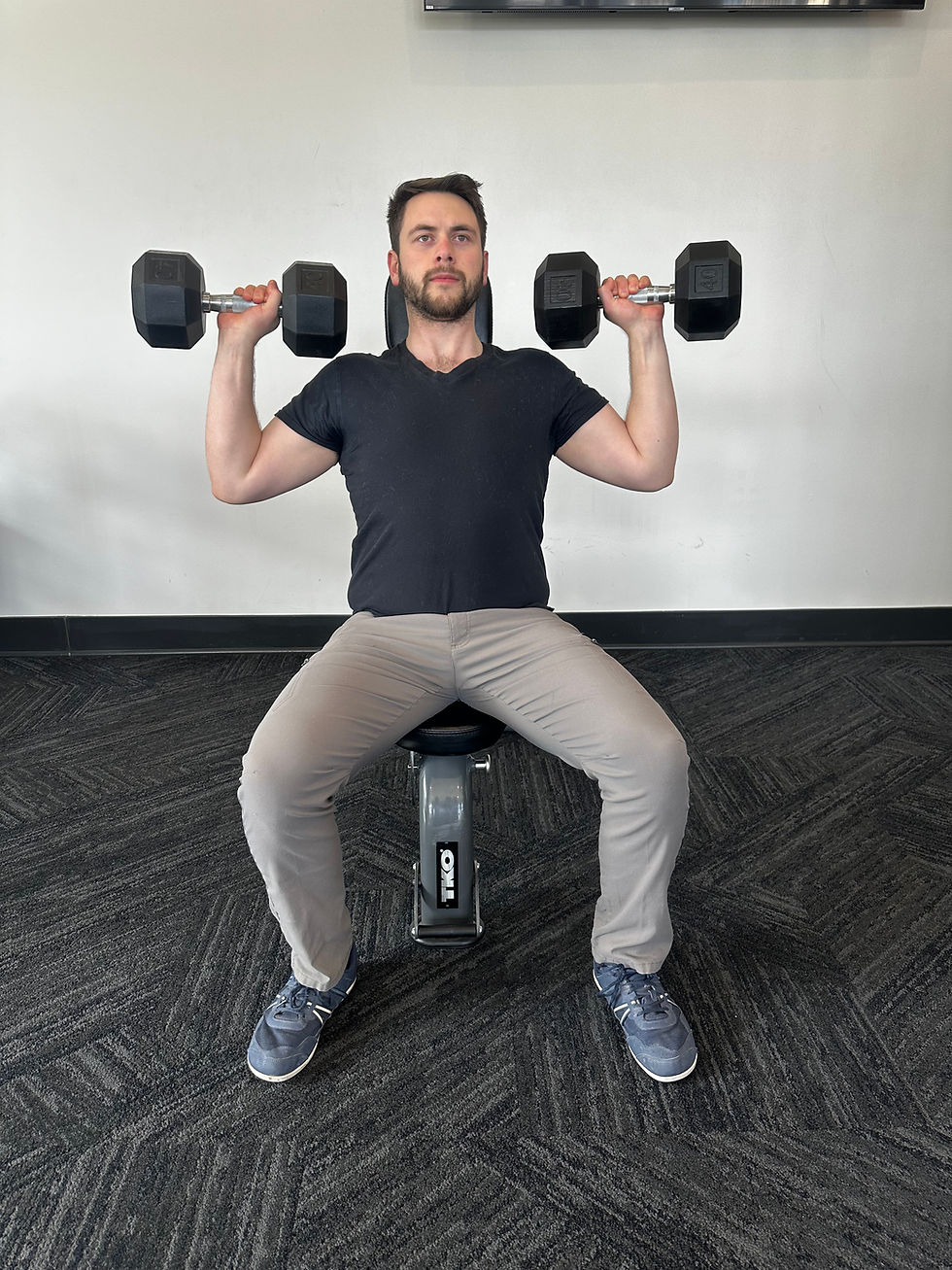Lateral Raise Exercise
- Benjamin Mishleau
- Jan 23
- 3 min read
Updated: Feb 20
The lateral raise exercise has its origins in early bodybuilding and strength training, emerging as a key movement for building shoulder width and stability. The lateral raise was embraced for its ability to specifically target the lateral deltoids, helping to create broader shoulders and a more balanced upper body. Over time, it became a staple in both bodybuilding and general fitness routines, valued not only for its aesthetic benefits but also for improving shoulder stability and functional strength.
Purpose: Designed to target and strengthen the shoulders, specifically the lateral deltoids. Improves shoulder stability for functional movements and other strength-training exercises.
Targeted Areas: Lateral deltoid (middle part of the shoulder), Trapezius, anterior deltoid, and rotator cuff muscles
Instructions:
Stand tall with your feet shoulder-width apart, holding a dumbbell in each hand at your sides with your palms facing inward. Engage your core, and keep your shoulders relaxed.
With a slight bend in your elbows, lift the dumbbells out to your sides until your arms are parallel to the floor, forming a "T" shape.
Pause briefly at the top of the movement, feeling the contraction in your shoulders.
Slowly lower the dumbbells back to the starting position with control.
Perform 10–15 repetitions for 2–4 sets, focusing on proper form rather than heavy weight.
Tips:
Avoid swinging the weights or using momentum to lift the dumbbells; focus on controlled movements.
Keep your neck neutral and avoid shrugging your shoulders during the exercise.
Start with lighter weights to master the technique before progressing to heavier loads.
Maintain a slight bend in your elbows to reduce stress on the shoulder joints.
Who Should Do Lateral Raises?
Lateral Raises are a great exercise for isolating the deltoid muscles, specifically the lateral (middle) head of the shoulder. They are ideal for:
Bodybuilders & Strength Athletes: Helps develop the shoulders and improve the V-shape appearance by targeting the middle delts.
Athletes: Particularly in sports that require strong shoulders for overhead movements, such as swimming, tennis, and volleyball.
People Looking to Improve Shoulder Stability: Lateral raises help strengthen the muscles responsible for stabilizing the shoulder joint.
Those with Postural Issues: Strengthening the shoulders can help counteract poor posture caused by rounded shoulders.
Beginners or Those New to Shoulder Training: It's a relatively simple exercise that can be used to build shoulder strength in a controlled manner.
Those Looking to Prevent or Rehab Shoulder Injuries: Strengthening the deltoids and stabilizing muscles around the shoulder joint can help reduce the risk of injury, especially for people with weak or imbalanced shoulder muscles.
Who Should Avoid or Modify Lateral Raises?
While generally safe, some individuals may need to modify or avoid the lateral raise exercise:
People with Shoulder Injuries or Discomfort: Those with rotator cuff injuries, shoulder impingement, or other shoulder problems may find the lateral raise aggravates their condition. It’s best to modify the range of motion or choose alternative shoulder exercises.
Individuals with Elbow or Wrist Pain: If wrist or elbow discomfort occurs, a neutral grip (thumbs facing up) or a different shoulder exercise might be more suitable.
People with Poor Posture or Unstable Shoulders: If there is significant instability or poor posture, the exercise could cause compensation, leading to additional strain. It's important to address posture issues first before attempting lateral raises.
Beginners Lacking Shoulder Control or Strength: Individuals new to training may struggle with the form and technique, which can lead to using momentum and placing stress on the wrong muscles (such as the traps). It's crucial to use light weights and focus on controlled movements.
People with High Blood Pressure or Heart Conditions: Lifting weights overhead may cause blood pressure to rise. If you have cardiovascular issues, it's essential to consult with a healthcare provider before doing lateral raises.
If It Causes Pain: If in doubt, if it causes pain, don't do it.








Comments